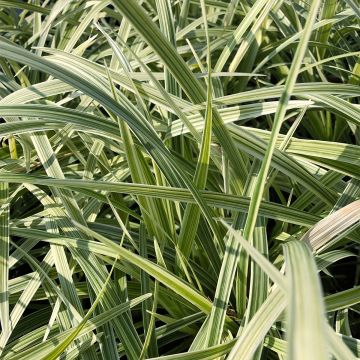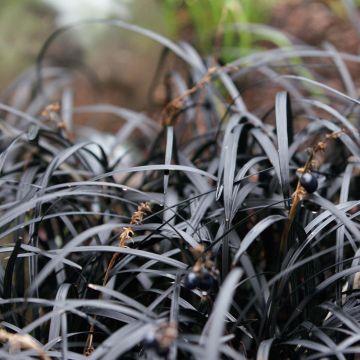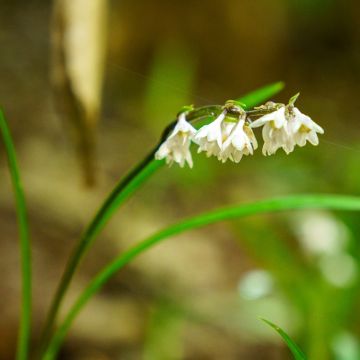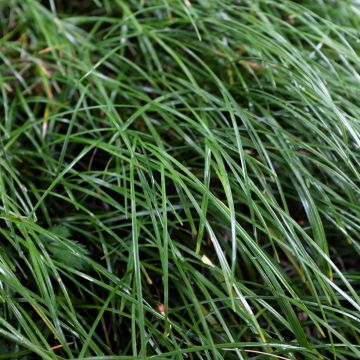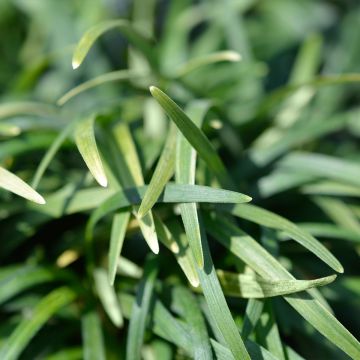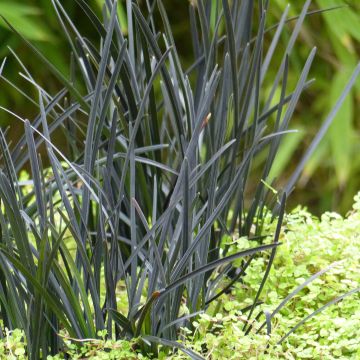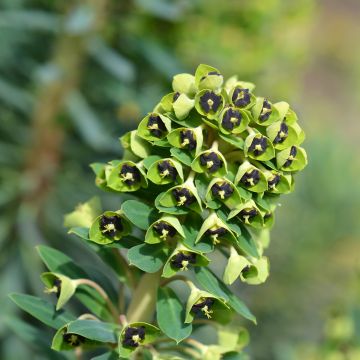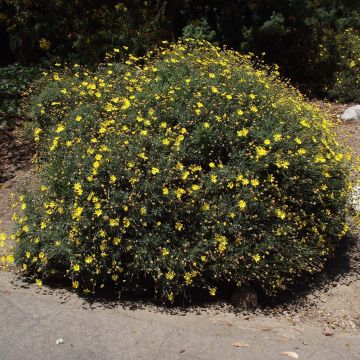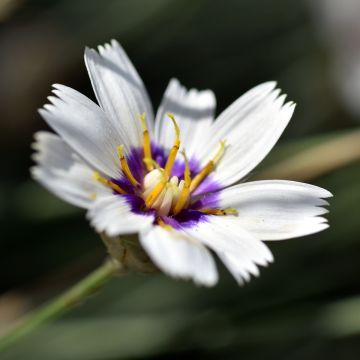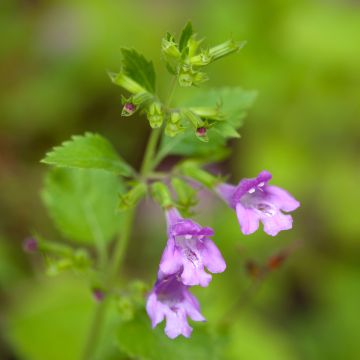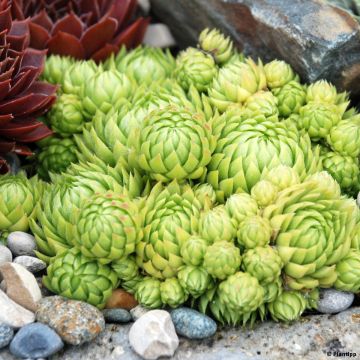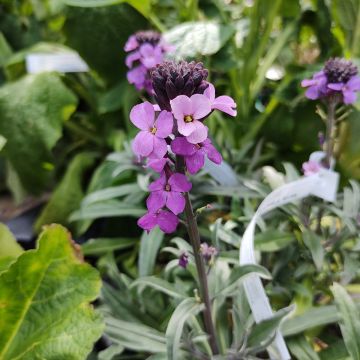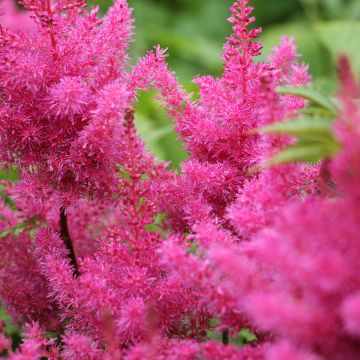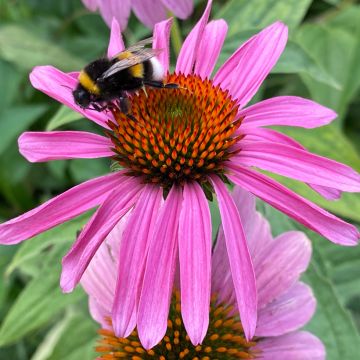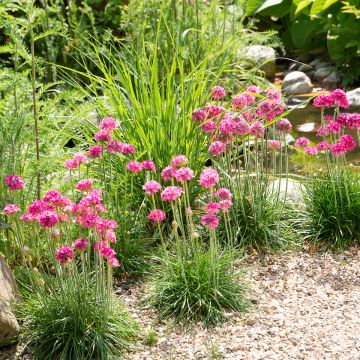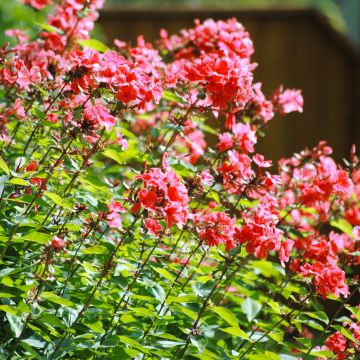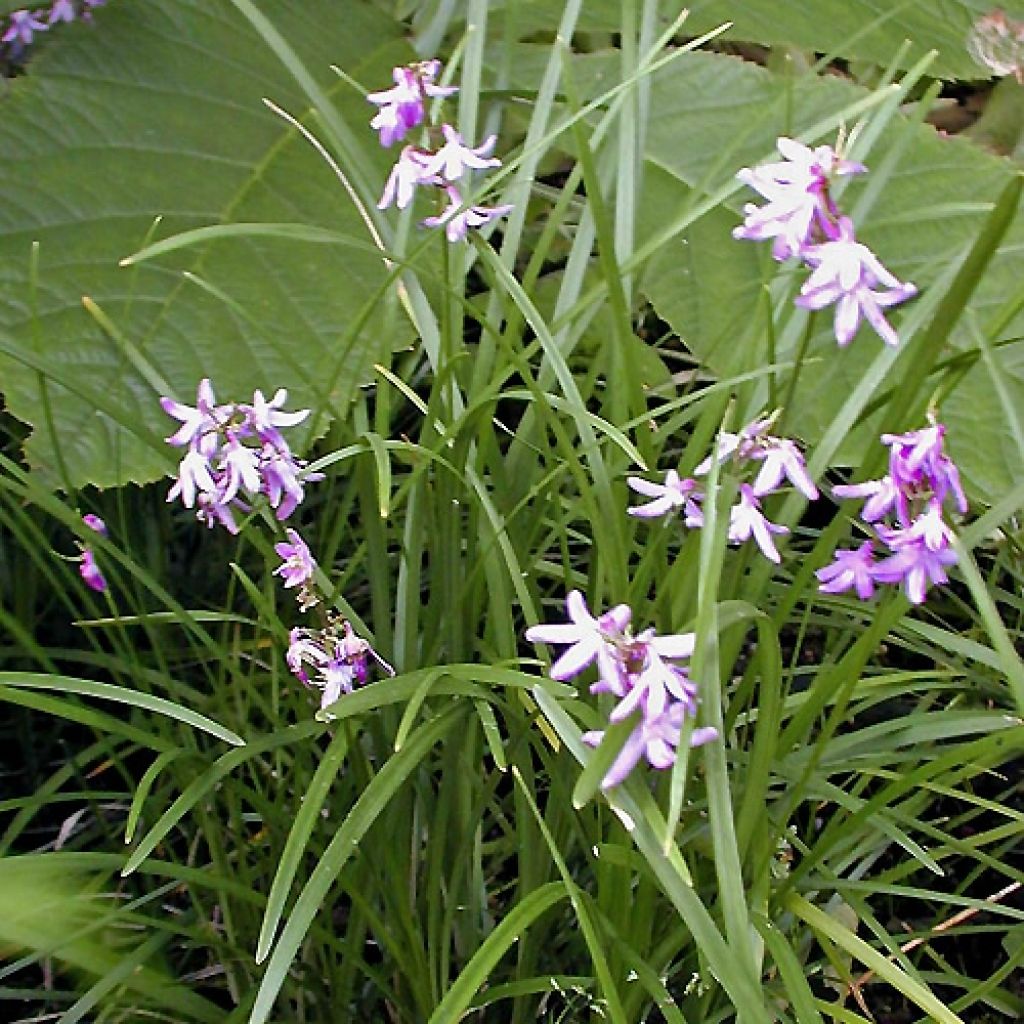

Ophiopogon chingii
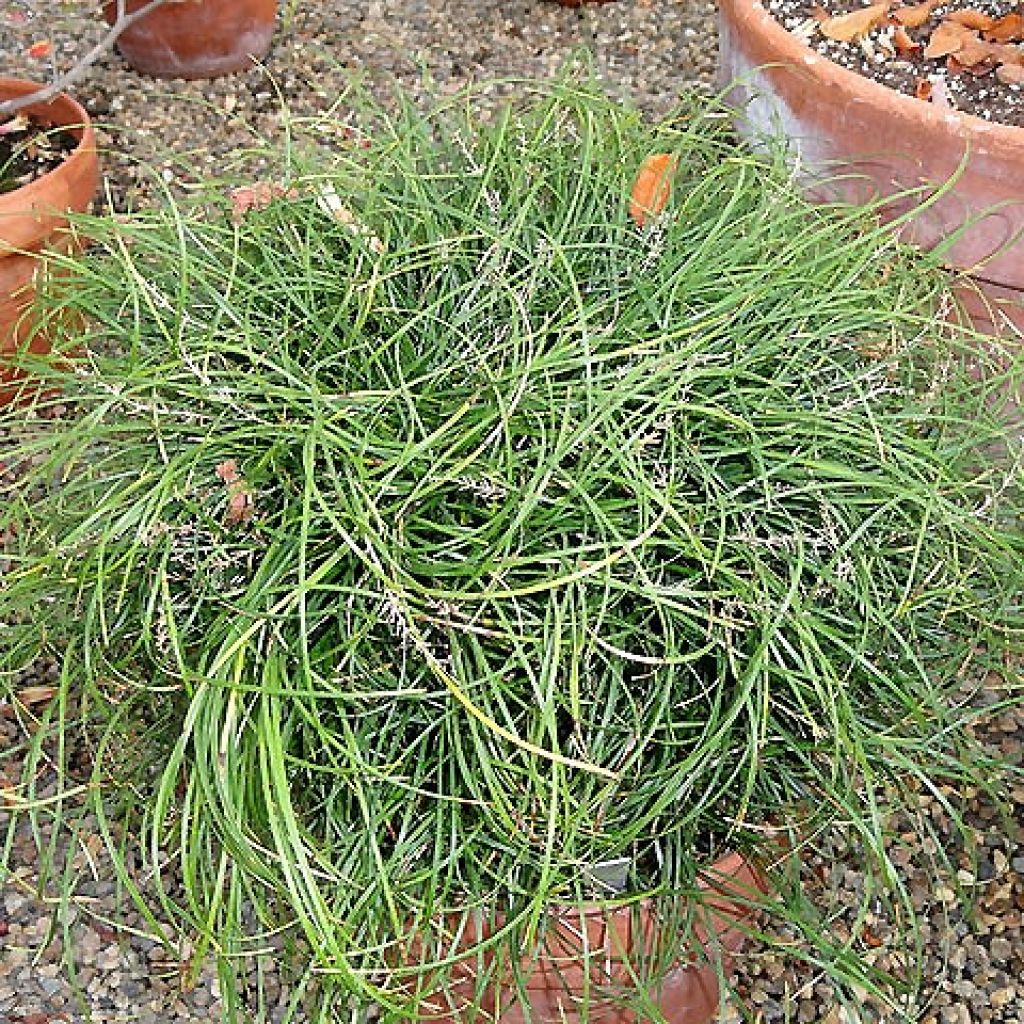

Ophiopogon chingii
Ophiopogon chingii
Ophiopogon chingii
Mondo Grass, Fountain Plant, Monkey Grass, Snake's beard
This item cannot be shipped to the selected country
Delivery charge from €5.90
Delivery charge from €5.90
More information
Delivery charge from €5.90
Delivery charge from €5.90
More information
Schedule delivery date,
and select date in basket
This plant carries a 12 months recovery warranty
More information
We guarantee the quality of our plants for a full growing cycle, and will replace at our expense any plant that fails to recover under normal climatic and planting conditions.
From €5.90 for pickup delivery and €6.90 for home delivery
Express home delivery from €8.90.
From €5.90 for pickup delivery and €6.90 for home delivery
Express home delivery from €8.90.
Does this plant fit my garden?
Set up your Plantfit profile →
Description
Ophiopogon chingii is a small perennial native to Asia that forms an attractive evergreen ground cover all year round, easy to grow and highly decorative under trees, along pathways or in partially shaded areas of the garden. Its grass-like foliage, very fine and slightly twisted, creates a vegetation that appears frozen in motion by the wind. It is adorned in summer with discreet cream-white flowers, followed by berries of a beautiful turquoise blue that have earned it its common name 'turquoise grass'. Perfect for dressing the base of bushes, often dry in summer, this Ophiopogon also grows very well in a pot, where it serves as a backdrop for flowering plants.
Ophiopogon chingii is a perennial plant with trailing rhizomes of Japanese origin. It belongs to the Asparagaceae family, and is a distant cousin of our lily of the valley. This plant grows in small, slightly flattened, particularly dense tufts, with a beautifully disordered appearance, which barely exceed 10cm in height, but spread slowly, without any theoretical limit. The growth of this plant is quite slow. The foliage persists all year round, but it can be destroyed during particularly harsh winters without endangering the plant. The leaves, very narrow and leathery, are more or less curved and have a slightly glossy medium green colour. Flowering takes place in July-August. The small whitish flowers, quite insignificant, carried by short stems, slightly protrude from the foliage. They give way to decorative fruits the size of a pea, of a turquoise blue colour, which persist for many weeks. Once well established, this perennial requires no maintenance.
Robust and hardy, but still relatively unknown, Ophiopogon chingii has a long lifespan, and its ease of cultivation will certainly make it a popular choice in gardens. Its main enemy is excessive limestone. Plant it in partial shade, in a rich, light humus soil. Unlike grass, it does not tolerate trampling, so plant it on the edge of woodland, in a fresh rockery, along a pathway... In a very Japanese-inspired spirit, this low-growing ground cover can be installed in front of a massif of Liriope muscari, shade-loving Carex, or Japanese grass Hakonechloa 'All Gold', for example.
Ophiopogon chingii in pictures
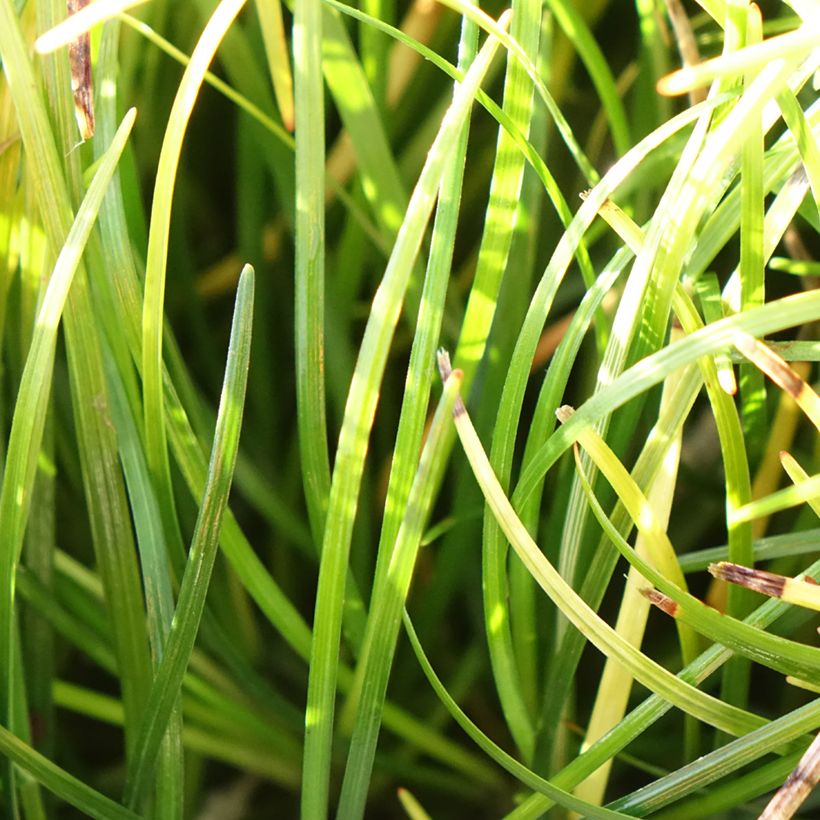

Flowering
Foliage
Plant habit
Botanical data
Ophiopogon
chingii
Convallariaceae (Lilliaceae)
Mondo Grass, Fountain Plant, Monkey Grass, Snake's beard
Southeast Asia
Other Ophiopogon
Planting and care
Cultivate Ophiopogon chingii in partial shade or not too dense shade, in any light, humus-rich soil, preferably non or slightly calcareous, even quite dry in summer. During periods of very cold weather, you can cover the clump with a layer of dead leaves, but only for a short period of a few days, otherwise the foliage will suffer from being confined. If the foliage turns brown due to cold, do not remove it, as it protects the plant stump. While it establishes itself, weed carefully and water if necessary. Make sure to protect young plantings from slugs and snails in spring. Once well established, this Ophiopogon requires no maintenance.
Planting period
Intended location
Care
-
, onOrder confirmed
Reply from on Promesse de fleurs
Summer flowering perennials
Haven't found what you were looking for?
Hardiness is the lowest winter temperature a plant can endure without suffering serious damage or even dying. However, hardiness is affected by location (a sheltered area, such as a patio), protection (winter cover) and soil type (hardiness is improved by well-drained soil).

Photo Sharing Terms & Conditions
In order to encourage gardeners to interact and share their experiences, Promesse de fleurs offers various media enabling content to be uploaded onto its Site - in particular via the ‘Photo sharing’ module.
The User agrees to refrain from:
- Posting any content that is illegal, prejudicial, insulting, racist, inciteful to hatred, revisionist, contrary to public decency, that infringes on privacy or on the privacy rights of third parties, in particular the publicity rights of persons and goods, intellectual property rights, or the right to privacy.
- Submitting content on behalf of a third party;
- Impersonate the identity of a third party and/or publish any personal information about a third party;
In general, the User undertakes to refrain from any unethical behaviour.
All Content (in particular text, comments, files, images, photos, videos, creative works, etc.), which may be subject to property or intellectual property rights, image or other private rights, shall remain the property of the User, subject to the limited rights granted by the terms of the licence granted by Promesse de fleurs as stated below. Users are at liberty to publish or not to publish such Content on the Site, notably via the ‘Photo Sharing’ facility, and accept that this Content shall be made public and freely accessible, notably on the Internet.
Users further acknowledge, undertake to have ,and guarantee that they hold all necessary rights and permissions to publish such material on the Site, in particular with regard to the legislation in force pertaining to any privacy, property, intellectual property, image, or contractual rights, or rights of any other nature. By publishing such Content on the Site, Users acknowledge accepting full liability as publishers of the Content within the meaning of the law, and grant Promesse de fleurs, free of charge, an inclusive, worldwide licence for the said Content for the entire duration of its publication, including all reproduction, representation, up/downloading, displaying, performing, transmission, and storage rights.
Users also grant permission for their name to be linked to the Content and accept that this link may not always be made available.
By engaging in posting material, Users consent to their Content becoming automatically accessible on the Internet, in particular on other sites and/or blogs and/or web pages of the Promesse de fleurs site, including in particular social pages and the Promesse de fleurs catalogue.
Users may secure the removal of entrusted content free of charge by issuing a simple request via our contact form.

































